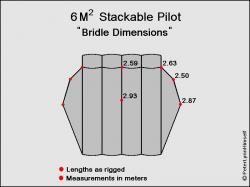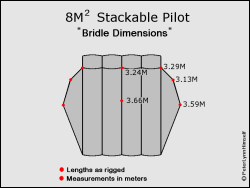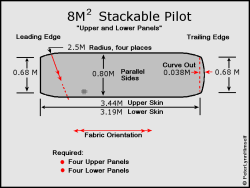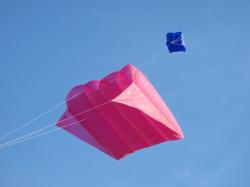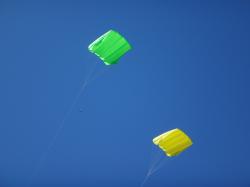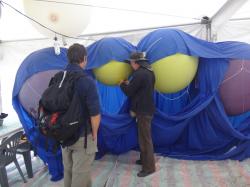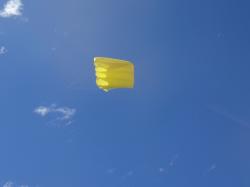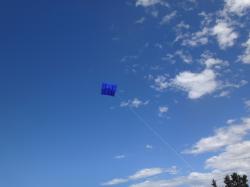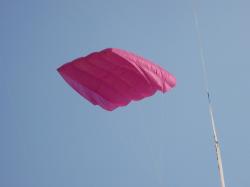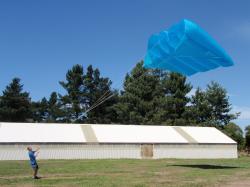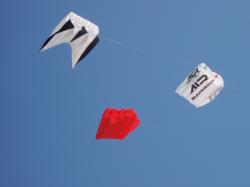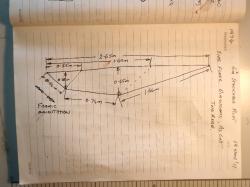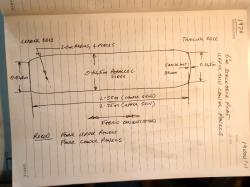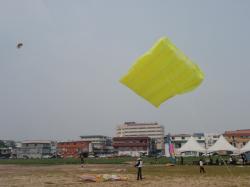Peter Lynn Kites, Pilot Kite History
Until the 1990's, we did not use Pilot kites as such, although Centipedes, Spinsocks and other line devices (pejoratively called sky junk) were flown under 'Lifters". 6m PLT box kite were what we used for this until 1988, after which we also made 6 cell 12sq.m parafoil kites something in the style of, but simpler than Doug Hagamans 'foils. When the Ray, Octopus and then Trilobite came out, these too were used for lifting.
Flying show kites in trains became standard at kite events by the middle 1990's- for greater kite density and spectator impact.
This led to the development of our specialised Pilot kites: smaller kites uncompromised by requirements for shape or graphics. These are flown above trains of show kites to extend their wind range to lighter, stronger and more turbulent winds- and to enable flying in more constrained locations.
Pilot kites, though very basic (4 cell, side keels only, 8 bridle) are highly developed. They need to be able to fly in winds of less than 10km/hr through to more than 70km/hr without bridle adjustment, must cope with gusty conditions and recover from wind induced collapse without intervention. Another design feature is that, as wind speed increases (all kites have an upper limit), they must fail by gradually leaning off to one side or the other rather than by looping out. This is so that line pull doesn't get out of hand. By 2010 their size range had expanded from the original 8sq.m down to 2 sq.m and up to 22 sq.m.
A challenge has been to inform users as to how to tune them for central flying in strong winds (or to pull them a little one way or the other to suit location). This is usually done by shortening the centre bridle (of three) on the side that it's desired to pull the kite towards- simple, but counterintuitive.
I sometimes count the number of our Pilots visible at kite events, have seen as many as 20 flying above everything else at the same time.
A negative (to purists) is that show kites are now designed less and less to be good fliers on their own account, traded off for better graphics- a win for spectators and festival organisers though.
Peter Lynn 2023


